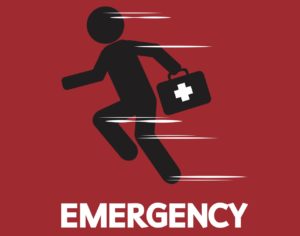 Accident And Emergency Care For Those With Thalidomide Embryopathy (TE)
Accident And Emergency Care For Those With Thalidomide Embryopathy (TE)
Key Facts For Medical Professionals
When providing Emergency Care medical professionals need to be aware that thalidomide affected individuals can have a wide range of disability from phocomelia to sight and hearing impairment. The following information highlights issues that may be relevant depending on the nature of the disability.
Some individuals may have had traumatic experiences with medical professionals before, especially surrounding issues such as venepuncture and anaesthesia so may be very anxious.
The ABCDE Approach….
A: Airway
Tracheal intubation may be difficult due to cervical spine abnormalities causing difficulties in neck extension.
Those with TE may have skull dysplasia/altered facial anatomy meaning intubation is more challenging.
![]()
B: Breathing
Those with TE are more likely to smoke that the average population, so will more at risk of COPD and lower oxygen saturations.
A small survey in Japan has shown a slight reduction in lung function in those with upper limb deficit.
![]()
C: Circulation
Those with TE may have unusual vasculature so gaining venous access may be challenging. If necessary, central venous access with ultrasound guidance should be considered.
Those with upper limb phocomelia may need blood pressure taking in the leg. It may be difficult to measure blood pressure reliably using non-invasive methods. If necessary, direct arterial blood pressure measurement should be considered.
![]()
D: Disability
Extra care should be taken when moving and handling as joint dysplasia can increase the risk of damage.
![]()
E: Exposure
Temperature regulation may be impaired, sometimes with massive sweating. Temperature monitoring should be considered.
![]()
Further information
Intubation
Intubation may be difficult due to dysplasia of the skull. Extension of the neck may be limited due to cervical spine abnormalities. An opinion from a senior anaesthetist may be required.
Anaesthetic
Abnormalities of the spine, including fusion of vertebrae, may lead to limitation of neck movement, and possible difficulties with spinal or epidural anaesthesia. Anaesthesia should be undertaken by experienced personnel, with appropriate dedicated assistance. Equipment and facilities to cope with unexpected complications must be readily available.
Drug dosing
Thalidomide affected individuals, due to smaller stature and/or missing limbs, may require reduced dosing of medications, for example, antibiotics.
Taking blood
Venous access may be limited and/or very difficult. Some thalidomide survivors may know the best place for blood to be taken, so please take their advice. If necessary, central venous access with ultrasound guidance should be considered.
Taking blood pressure
If phocomelia is present, blood pressures can be taken in the leg. The Trust has produced a video on how to do this.
It may be difficult to measure blood pressure reliably using non-invasive methods. If necessary, direct arterial blood pressure measurement should be considered.
Moving and handling /examination of thalidomide survivors
Extra care should be taken when moving and handling as joint dysplasia can increase the risk of damage. Many thalidomide survivors have chronic pain and arthritis so extra care should be given in examination.
In addition, if they are upper limb affected and have a short reach, please ensure they have a drinking straw for liquids and that the emergency button is moved within their reach.
Contact Us
Please contact the Medical Advisers at the Thalidomide Trust, Dr Dee Morrison and Dr Susan Brennan, if you would like more information. Our telephone number is 01480 474074.
Preparing For Surgery

The key medical issues to be considered before surgery on people with thalidomide damage
